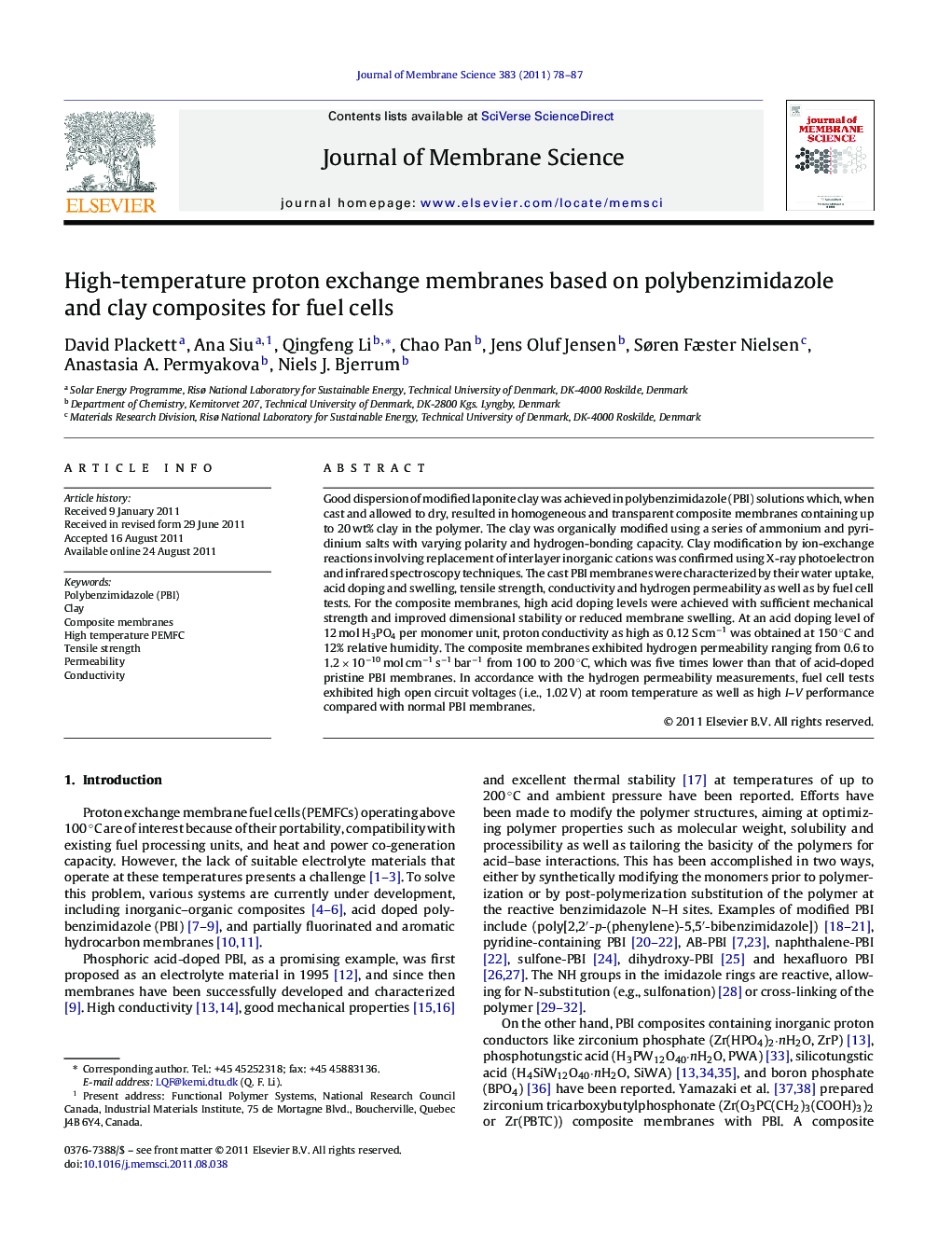| کد مقاله | کد نشریه | سال انتشار | مقاله انگلیسی | نسخه تمام متن |
|---|---|---|---|---|
| 635417 | 1456096 | 2011 | 10 صفحه PDF | دانلود رایگان |

Good dispersion of modified laponite clay was achieved in polybenzimidazole (PBI) solutions which, when cast and allowed to dry, resulted in homogeneous and transparent composite membranes containing up to 20 wt% clay in the polymer. The clay was organically modified using a series of ammonium and pyridinium salts with varying polarity and hydrogen-bonding capacity. Clay modification by ion-exchange reactions involving replacement of interlayer inorganic cations was confirmed using X-ray photoelectron and infrared spectroscopy techniques. The cast PBI membranes were characterized by their water uptake, acid doping and swelling, tensile strength, conductivity and hydrogen permeability as well as by fuel cell tests. For the composite membranes, high acid doping levels were achieved with sufficient mechanical strength and improved dimensional stability or reduced membrane swelling. At an acid doping level of 12 mol H3PO4 per monomer unit, proton conductivity as high as 0.12 S cm−1 was obtained at 150 °C and 12% relative humidity. The composite membranes exhibited hydrogen permeability ranging from 0.6 to 1.2 × 10−10 mol cm−1 s−1 bar−1 from 100 to 200 °C, which was five times lower than that of acid-doped pristine PBI membranes. In accordance with the hydrogen permeability measurements, fuel cell tests exhibited high open circuit voltages (i.e., 1.02 V) at room temperature as well as high I–V performance compared with normal PBI membranes.
Good dispersion of modified laponite clay in polybenzimidazole gives homogeneous, composite membranes that are robust and, dimensionally stable. Upon acid doping, membranes exhibit high proton conductivity, low gas permeability and better fuel cell performance.Figure optionsDownload high-quality image (284 K)Download as PowerPoint slideHighlights
► Organo-modified laponite clay.
► Good dispersion in PBI matrix and homogeneous, transparent and robust composite membranes.
► Higher acid doping level (proton conductivity), better dimensional stability and improved mechanical strength.
► Five times lower hydrogen permeability and therefore higher open circuit voltage.
Journal: Journal of Membrane Science - Volume 383, Issues 1–2, 1 November 2011, Pages 78–87